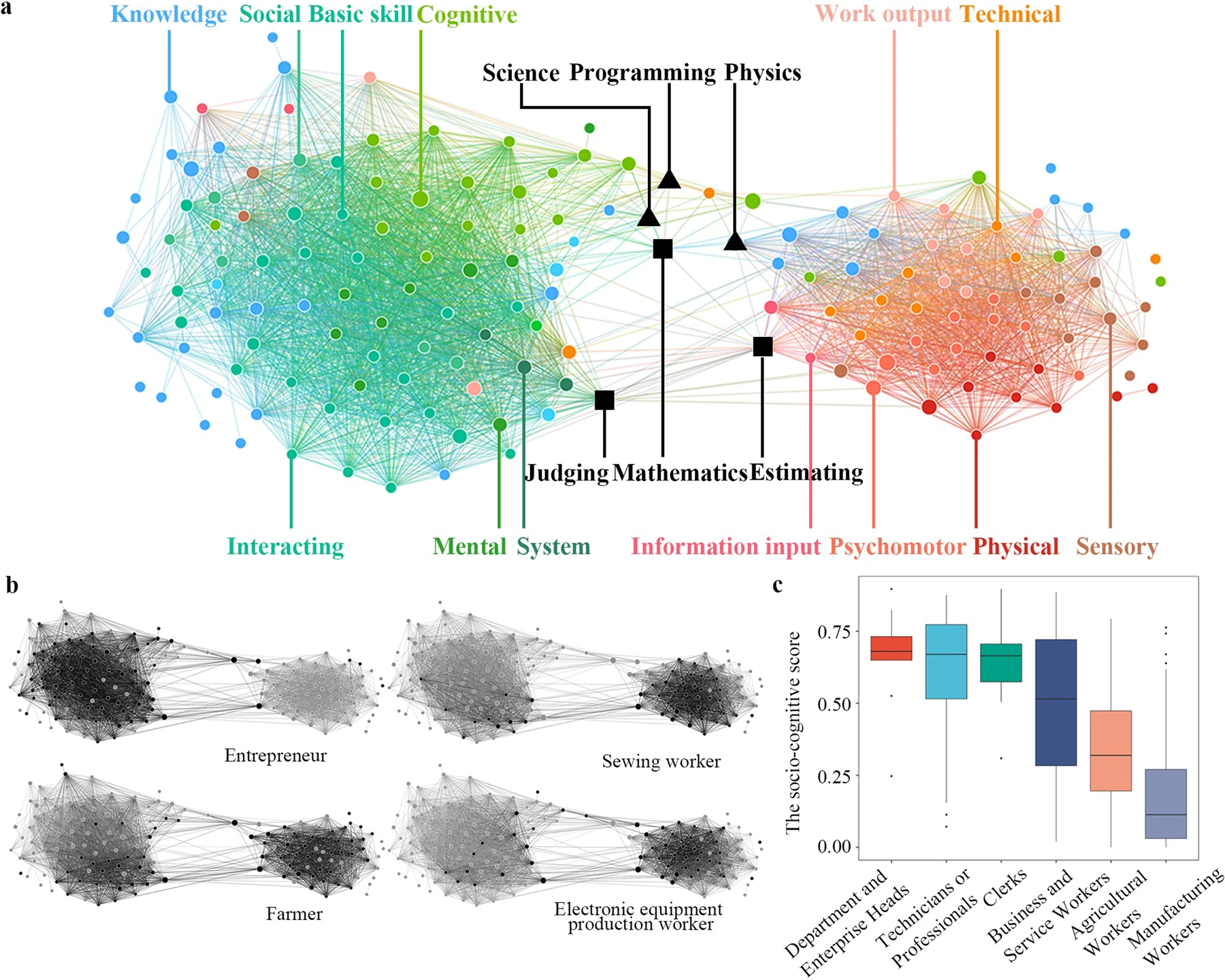Developing China’s workforce skill taxonomy reveals extent of labor market polarization.
Weipan Xu
Xiaozhen Qin
Xun Li, Haohui Chen
Alex Rutherford
Andrew Reeson
Iyad Rahwan
Published at
Humanities and Social Sciences Communications
2021

Abstract
China, the world’s second largest economy, is transitioning into an advanced, knowledge-based economy after four decades of rapid economic development. However, China still lacks a detailed understanding of the skills that underly the Chinese labor force, and the development and spatial distribution of these skills. Similar data has proven essential in other contexts; for example, the US standardized skill taxonomy, Occupational Information Network (O*NET), played an important role in understanding the dynamics of manufacturing and knowledge-based work, and the potential risks from automation and outsourcing. Here, we use Machine Learning techniques to bridge this gap, creating China’s first workforce skill taxonomy, and map it to O*NET. This enables us to reveal workforce skill polarization into social-cognitive skills and sensory-physical skills, and to explore China’s regional inequality in light of workforce skills, and compare it to traditional metrics such as education. We build an online tool for the public and policy makers to explore the skill taxonomy: skills.sysu.edu.cn. We also make the taxonomy dataset publicly available for other researchers.